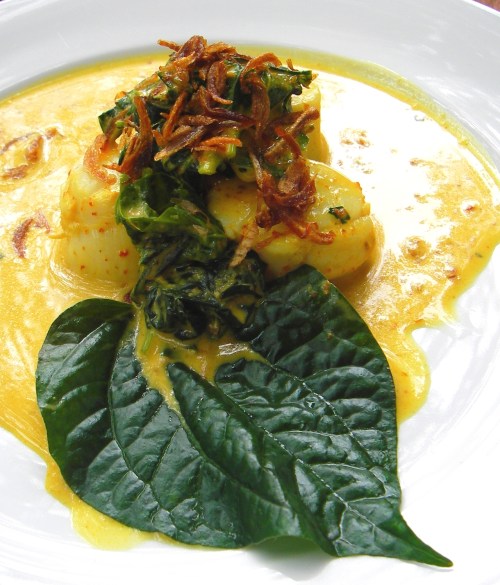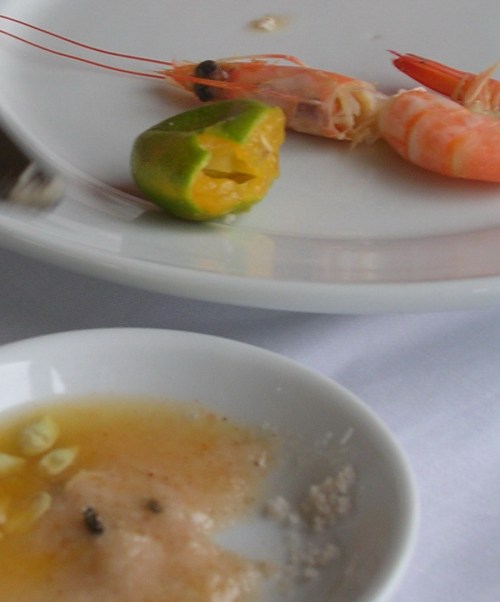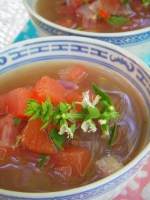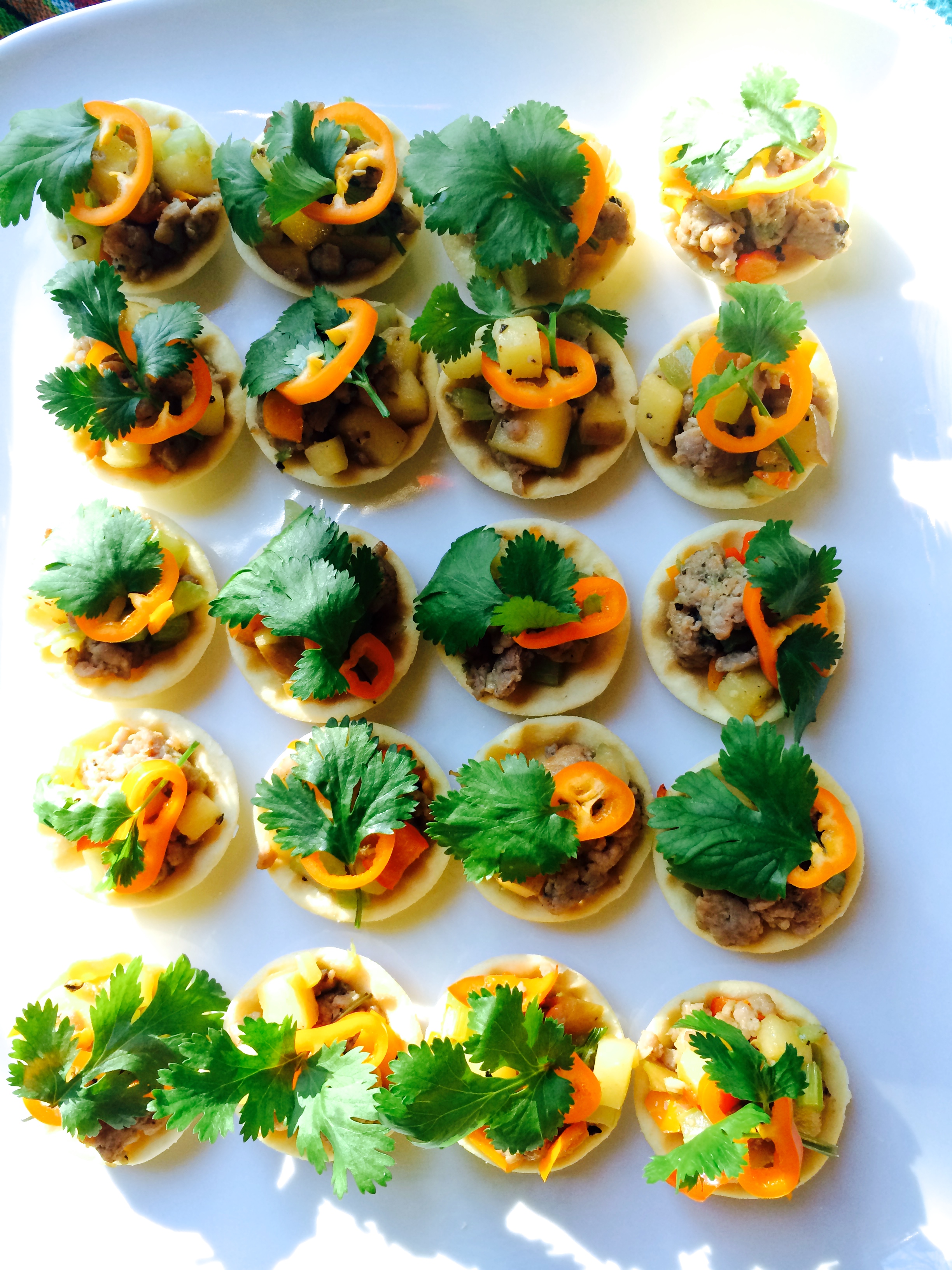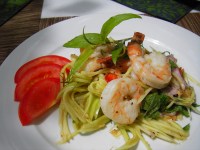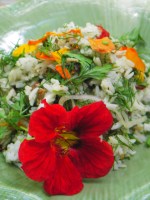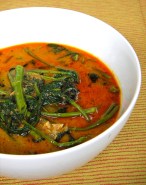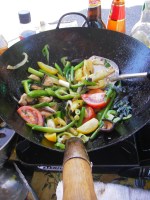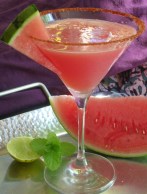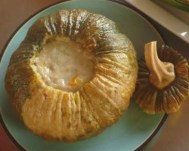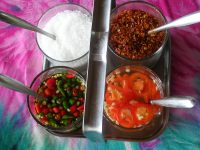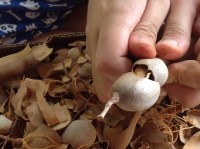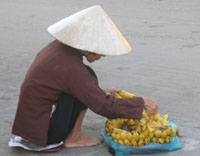Let It Stew
I love having a stew cooking on my stove top while I am catching up with a pile of work. I have had a frozen pork belly in my freezer for a month now, waiting for the time when it will become Moo Palo, or Stewed Pork Belly with Cinnamon and Star Anise in Soy Sauce, a delightful dish of Thailand. I could no longer make excuses that I was too busy too cook—I can accomplish both working and cooking: Just let it stew.
I worked at my home office all last week to meet my deadline for editing recipes and writing a proposal. When I saw the frozen pork belly in my freezer I pulled it out to thaw so that I could cook it the next day. The rest was simple. I cut the pork belly into pieces, placed them in a Dutch oven and sprinkled the remaining ingredients randomly on top. Then I let the stove top (or you can use the oven) do the work of cooking. I took a break from work from time to time to check on the stew. While it cooked itself on the stove top for 2 hours, in my office I enjoyed the aroma of soy and cinnamon and star anise interacting with each other.

Stewed Pork Belly with Cinnamon and Star Anise in Soy Sauce, Moo Palo
This dish is similar to Thai Moo Palo but I omitted the hard-boiled eggs and instead of using five spice powder, I used Vietnamese cinnamon and star anise. What I was looking for was a sweeter and more delicate flavor than from the Vietnamese version with cinnamon and dark soy sauce. It was surprising good and sophisticated. When I checked with my family they had no idea that there was a tablespoon of black pepper in it. It had just a hint of black pepper deepening the sauce.
In Phuket, this dish is called by its Phuket Hokkien name: Moo Hong – หมูฮ้องสูตรภูเก็ต. I cooked it the same way my mother would, with the fat and skin attached to the pork belly to keep it sweet and moist. The important ingredients that give Moo Palo or Moo Hong Phuket its unique flavor are dark soy, crushed garlic cloves, black pepper, cinnamon powder, cinnamon sticks and star anise.
![]()
Stewed Pork Belly with Vietnamese Cinnamon and Star Anise in Soy Sauce
Moo Palo
หมูพะโล้
Serves 4
Preparation time: 10 minutes
Stewing time: 2 hours on medium heat on stove top
2 pounds pork belly (aka side pork) with fat and skin attached, cut into 1½-inch thick pieces 2 tablespoons dark soy sauce (Bengal) 3 tablespoons light soy sauce, more as needed 2 tablespoons Vietnamese cinnamon powder 1 tablespoon whole black peppers, crushed 8 cloves garlic, crushed and peeled (don’t chop, keep them whole) 3 star anise, whole 5 cloves, whole 2 cilantro stems, see Pranee’s explanation on cilantro root 2 teaspoons brown sugarPlace cut up pork belly in a dish and stir in the dark soy sauce, light soy sauce, Vietnamese cinnamon powder and black pepper; mix well. Marinate overnight or for several hours.
Place the pork belly and marinade in a Dutch oven over medium-high heat, then add garlic, star anise, cloves and brown sugar on top of pork. Brown the meat a little, then add water to cover the top of pork by 1 inch. Bring to a boil, then turn heat down to medium or medium low (depending on the burner) to create a nice gentle boil. Let it cook for 1 hour. Stir occasionally and add water if needed.
After an hour and a half, cover the Dutch oven with a lid and let the pork simmer for about a half hour, or until tender. (It is tender when you can cut it with a fork and it breaks up nicely without an effort.) Reduce the sauce to 1 cup, about ¼ cup per serving.
Serve warm with steamed jasmine rice.
Pranee’s note:
Vietnamese Cinnamon or Saigon Cinnamon has more essential oils and 25 percent more Cinnamaldehyde than other kinds of cinnamon.
You may add 4 shelled hard boil eggs during the last 1 hour of stewing time. It is also delicious served with cooked thin rice noodles.
An alternative cooking method is to braise the stew in the oven at 300°F for 3½ hours.
© 2011 Pranee Khruasanit Halvorsen I Love Thai cooking Pranee teaches Thai Cooking classes in the Seattle area. Her website is: I Love Thai cooking.com .
Related articles
- imabonehead: Vietnamese Caramelized Pork (Thit Kho To) (appetiteforchina.com)
- How to cure bacon at home (gregpoirier.com)
- Trade in Pork Bellies Comes to an End, but the Lore Lives (nytimes.com)
- Herb of the Day for July 27th is Star Anise (witchesofthecraft.wordpress.com)
- Chicago exchange drops frozen pork belly contracts (sfgate.com)


